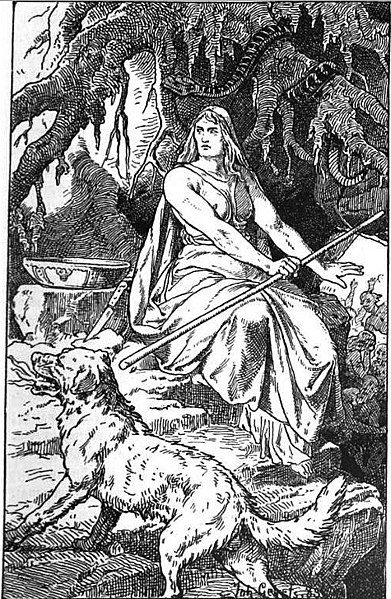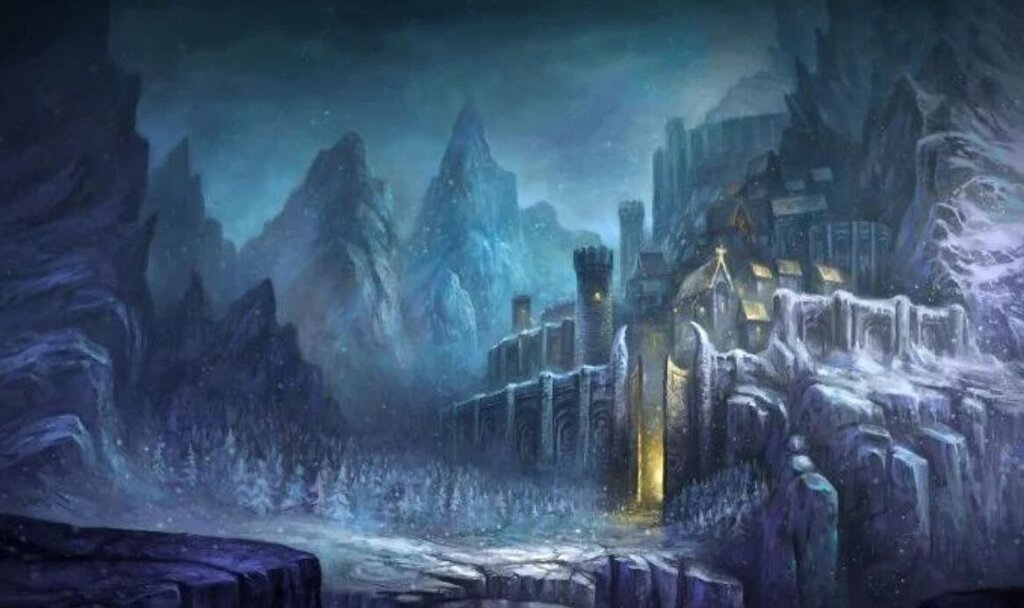Helheim (Hel), which means "house of Hel" in Old Norse, is one of the nine worlds of Norse mythology. Those who did not find themselves in Valhalla, the afterlife of brave warriors, were destined to spend eternity in this underworld realm of the dead.
What is Helheim?
It has been said that all people who die from illness, old age, or are regarded as cowards or dishonorable by the Gods and Goddesses will end up in the realm of Helheim.
According to the Viking Age, if you did not die in battle, you would simply go to Helheim. However, this notion is a point of contention amongst Norse mythology experts.
While the Old Norse sources are far from clear on how one ended up in one of the Norse afterlife realms instead of another, what is evident is that where one goes after death is not a reward for moral behavior or pious belief, nor is it a punishment for immoral behavior or impious belief.
Helheim according to Snorri Sturluson
Snorri Sturluson in the Prose Edda describes Helheim as a thoroughly unpleasant place. Snorri wrote many generations after Norse paganism had been replaced by Christianity and ceased to be a living tradition. He was fond of presenting his pre-Christian ancestors as anticipating aspects of Christianity based on the evidence available to him.
Snorri’s assertion that those who die in battle go to Valhalla, the sublime hall of Odin, while those who die from sickness or old age go to Hel is unrealistic.
Snorri himself contradicts his distinction between Valhalla and Helheim in his version of the story of Baldr, Odin’s son, who is violently killed but is nonetheless carried to Hel.
No other source makes this distinction, and several examples provide evidence to the contrary.
What is life in Helheim like?
Although the underworld is rarely described in the sources, when it is, it is often portrayed in a positive light.
As a place where the dead live on in some capacity, it is sometimes portrayed as a land of startlingly abundant life on the other side of death.
In Helheim, the dead participate in the same activities as Viking age men and women: eating, drinking, fighting, sleeping, and so on.
It was not a place of eternal bliss or torment but rather a continuation of life at a different location.
Is Helheim hot or cold?
There are some conflicting accounts of Helheim that state that the temperatures are scorching hot and blistering cold. However, by most accounts, it is a cold dark place.
These contradictory accounts make it difficult to give a definitive answer regarding whether Helheim is hot or cold, but for simplicity’s sake, I would say, yes, it’s cold.
Are Niflheim and Helheim the same?
In theory, yes.
Niflheim appears in Snorri Sturluson’s Prose Edda in the Gylfaginning section.
Niflhel means “foggy/misty Hel.” or “dark Hel.” Rudolf Simek, Austrian philologist and religious studies scholar, suggests that this notion of a realm separate from Helheim, a place of punishment, is the consequence of Snorri’s Christian conceptions and biases.
Hel, or Helheim, is the name used everywhere else to indicate the land of the dead.
What is the difference between Valhalla and Helheim?
A great deal of emphasis was placed on dying with honor in Norse culture. It was on foreign battlefields where the most honorable deaths were achieved. As a result, those who died in such a manner were guaranteed eternal life in the paradise of Valhalla with Odin. Those who died defending their homes or local lands were also honored, although not as greatly.
People who passed away of old age or illness were considered to have died without honor and were therefore destined for eternity in the dismal underworld of Hel.
Who rules Helheim?
Helheim is ruled by the goddess of death, Hel.
It is believed that Hel was the daughter of Loki, the trickster god, and the giantess Angrboda. She was cast out of Asgard, the home of the gods, shortly after her birth by Odin. She was sent to Niflheim, the underworld or land of the dead, where she was made queen of all who died without glory.
Several sources describe the goddess as a half-flesh-colored and half-bluish-black monster. She lived in a castle named Eljudnir and ate her meals with a dish called Hunger and a knife named Famine. The two servants who attended her, Ganglati and Ganglot, moved so slowly that they appeared to be standing still.
Garm, a monstrous hound, and Modgud guard the entrance to Helheim. At the edge of the world, overlooking Helheim stands the giant Hraesvelg (“corpse eater”). He creates the wind by flapping his wings in the form of an eagle.

Is Hel good or evil?
Neither good nor evil; Hel is a cold and uncaring character in Norse mythology.
Who kills Hel in Norse mythology?
She has likely been destroyed as a result of the World Fire unleashed by the Fire giant Surtr, which brings down all nine realms.
At Ragnarök, she plays a supporting role consistent with both her nature and how she appears throughout the Norse myths.

